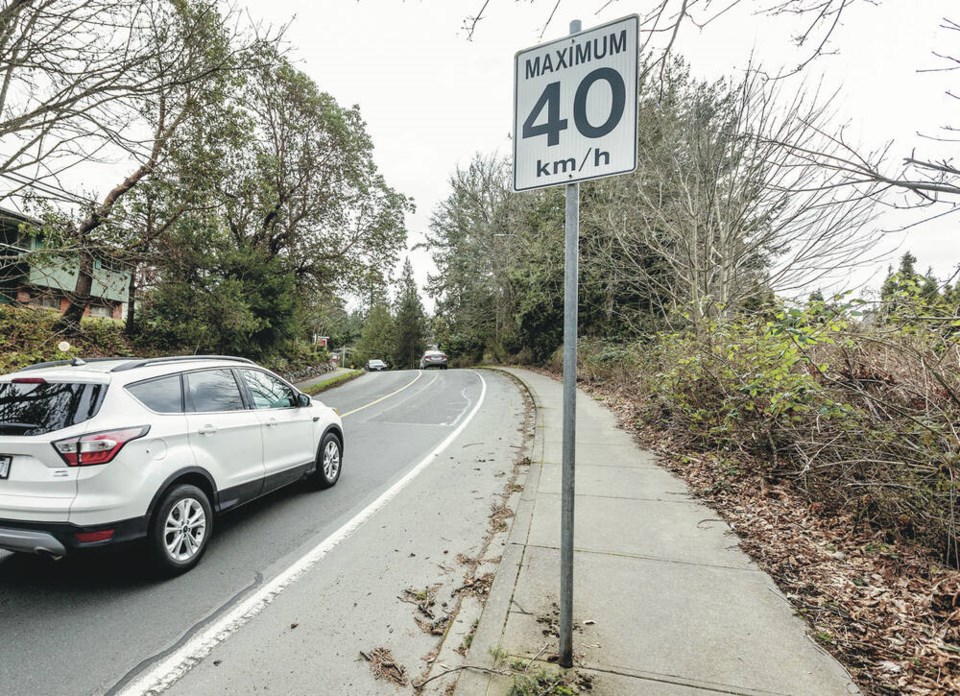Roadway markers are the bedrock of traffic engineering systems. Painted lines, directional signs, coloured lights, arrows and reflective barriers give drivers the information they need to follow the rules set down by our laws.
Without these symbols, which we take for granted every day, there would be vehicular chaos.
Canada and Australia basically follow a convention on road signs based on the American Manual on Uniform Traffic Control Devices. That manual tells government authorities what a sign or traffic control device should look like when they want drivers to do certain things, like,stop, slow down or not turn here.
But despite the importance of the traffic control device, I’m often amazed at the number of times I’ve seen these vital parts of road safety installed improperly and many times installed in ways or in places that are incomprehensible.
There’s now a steady movement throughout the region to reduce municipal speed limits to 40 km/h. The problem is that the provincial government has expressed no interest in changing from the 50 km/h limit prescribed by our provincial motor vehicle act. A municipality has the right to change speed limits on any given street, but that requires proper signage.
I’ve seen a couple of examples recently where a solitary 40-km sign is erected on one block but not on the subsequent blocks along that same street. So if you turned onto that street a block away from that 40-km sign, you haven’t actually passed any speed sign — the speed limit is legally then 50 k. The point is: If you want a 40-km zone you have to sign it properly — every block.
In Westshore there’s a sort of bike lane that is a real baffler.
On one stretch of road there’s a simple painted white line marking a shoulder. It then changes into a bike lane via some markings on the road. Metres later, it then turns back into a simple white painted line making it a shoulder again — without warning. Then it all disappears completely, even though there’s no change in the width of the road, only to reappear with proper bike lane markings a couple of blocks further along the way.
Somebody’s Christmas bonus needs rescinding on that one.
Another favourite of mine is that mandatory left or right turn lane at an intersection — the ones marked with a big right or left turn arrow painted on the road. They are also marked with a solid white — which defines it as a turning lane. Remember though from your driving exam that it’s illegal to cross a solid white line.
So who painted the white line painted past the point where cars park, leaving no room for you to legally enter the turn lane? In other words, turn lanes where it’s technically illegal to turn.
Another puzzler is using different types of playground signs in the same playground zone. One sign has a white speed tab reading: “30 km/h,” which means that’s the mandatory speed limit, but a few metres away is a second playground zone sign with a yellow 30 km/h speed tab below it, which means the speed posted is cautionary or advisory only and not enforceable.
It’s hard to understand why this is so difficult given that traffic signals and sign configurations are clearly spelled out in our motor vehicle act regulations. Hey, they’ve even thrown in little pictures showing exactly what these things are supposed to look like.
Finally, there’s the phantom construction zone. Long after work has been completed and there’s not the slightest indication of any work taking place, construction barricades and speed zone signs are left sitting there.
I ran across one construction area in the interior still full of orange cones, signs and reduced speed limits yet also displaying the standard propaganda sign proudly declaring: “Project Completed! Cost: etc etc”.
Each one of these examples are trivial things by themself. A white line is a little too long. So what?
The real problem is that they create an attitude of indifference and complacency in the minds of many drivers. That sign that makes no sense or that worn out or defective control device gives poor drivers one more reason to ignore all the rest of the rules, putting the rest of us in jeopardy.
Glove Box: Speaking or markings, several readers have asked about the purpose of those green painted patches, usually in or around intersections. According to the National Association of City Transportation Officials, green patches highlight potential conflict areas between bikes and vehicles. They are meant to reinforce priority to bicycles and also used in areas with pressure from illegal parking. In other words don’t stop or park on the green paint — they’re for bikes only.



